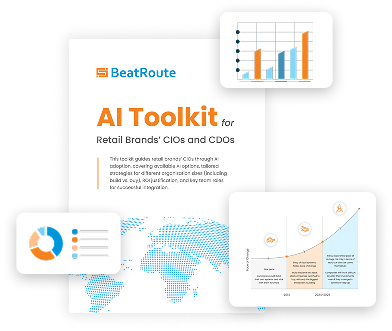From Shelf to Sale: What Retail Brands Must Know About the Consumer Goods Industry

From the shampoo on your bathroom shelf to the refrigerator in your kitchen, consumer goods surround us — and shape the choices we make every day. The Consumer Goods Industry refers to the network of companies involved in creating, marketing, and distributing finished products intended for personal use. It spans everyday essentials like food and hygiene products to high-value items like electronics and appliances. What makes it central to daily life is its role in fulfilling basic needs and lifestyle aspirations. Globally, it’s a major economic driver, influencing supply chains, manufacturing innovations, and retail strategies across both developed and emerging markets.
What Retail Brands Must Know About Product-to-Shelf Strategy
The consumer goods industry isn’t just about making products — it’s about making sure those products sell, and sell well. For retail brands, this means understanding the lifecycle of a product from ideation and manufacturing, all the way to how it looks, feels, and performs at the shelf.
Every packaging decision, every display execution, and every restocking rhythm matters. Because in this industry, visibility and availability directly impact conversion.
Categories That Matter Most to Retail Brands
- Fast-Moving Consumer Goods (FMCG): High volume, high turnover products like snacks, beverages, personal care.
- Durables: Longer-use items like air purifiers, washing machines, and kitchen appliances.
- Nondurables: Shorter shelf-life products like cosmetics, detergents, or packaged foods.
Each category requires a distinct shelf strategy — but all share the same goal: consistently delight the consumer at the point of purchase.
From Store Aisles to Digital Shelves
Today’s retail brands must think omnichannel. That means ensuring product visibility and presentation is optimized across:
- Physical stores (GT and MT)
- E-commerce platforms
- Quick commerce and D2C channels
Example: A cosmetics brand ensures its newly launched serum is highlighted at pharmacy shelves, featured in MT displays, and tagged as “Trending” on major e-comm platforms.
The Shelf is the Battlefield
Retail success hinges on:
- Planogram execution: Is your product placed where it matters?
- Merchandising consistency: Is it visible, stocked, and aligned with your campaign?
- Retailer relationships: Are store staff trained or incentivized to push your product?
Retail-ready execution is the difference between being seen vs. being skipped.
Insights That Drive Shelf-Level Wins
- Use consumer data and POS insights to tailor product assortment.
- Run store-specific activations that match local demand patterns.
- Optimize packaging for both shelf appeal and operational efficiency.
Example: A beverage brand uses regional demand data to introduce smaller packs in metro stores and larger bundles in Tier 2 outlets.
The Role of Technology
Tech-enabled retail execution platforms like BeatRoute help brands:
- Track secondary sales and product visibility in real-time
- Automate beat plans and merchandiser tasks
- Capture visual proof of POSM and shelf conditions
Final Thoughts
The consumer goods industry might begin in factories, but success is built at the shelf. For retail brands, every touchpoint from warehouse to POS is an opportunity to influence purchase.
Book a demo with BeatRoute to see how we help consumer brands go from shelf to sale — with zero blind spots.
About the Author
-
Surya Panicker is the Head of Content at BeatRoute, where she leads content strategy for India’s goal-driven sales platform. With 9 years in marketing automation and SaaS, Surya specializes in building content that translates complex solutions into actionable business outcomes. Her approach combines data-driven insights with a storytelling mindset, always putting the customer at the center of her narratives. Surya focuses on aligning brand messaging with audience needs to deliver practical results. Outside of work, she enjoys exploring new cuisines, reading fiction, and traveling with her family.
Use Goal-Driven AI to Achieve Retail Sales Uplift, Today!
Join enterprises in 20+ countries that trust BeatRoute, the globally dominant AI platform for sales force automation, field sales, DMS, and eB2B
Latest Insights & Articles
Here are the most impactful articles, platform updates, ebooks and reports for you.



